fall inside a hole
Plarail October 1984 Catalogue
Click photos for full size
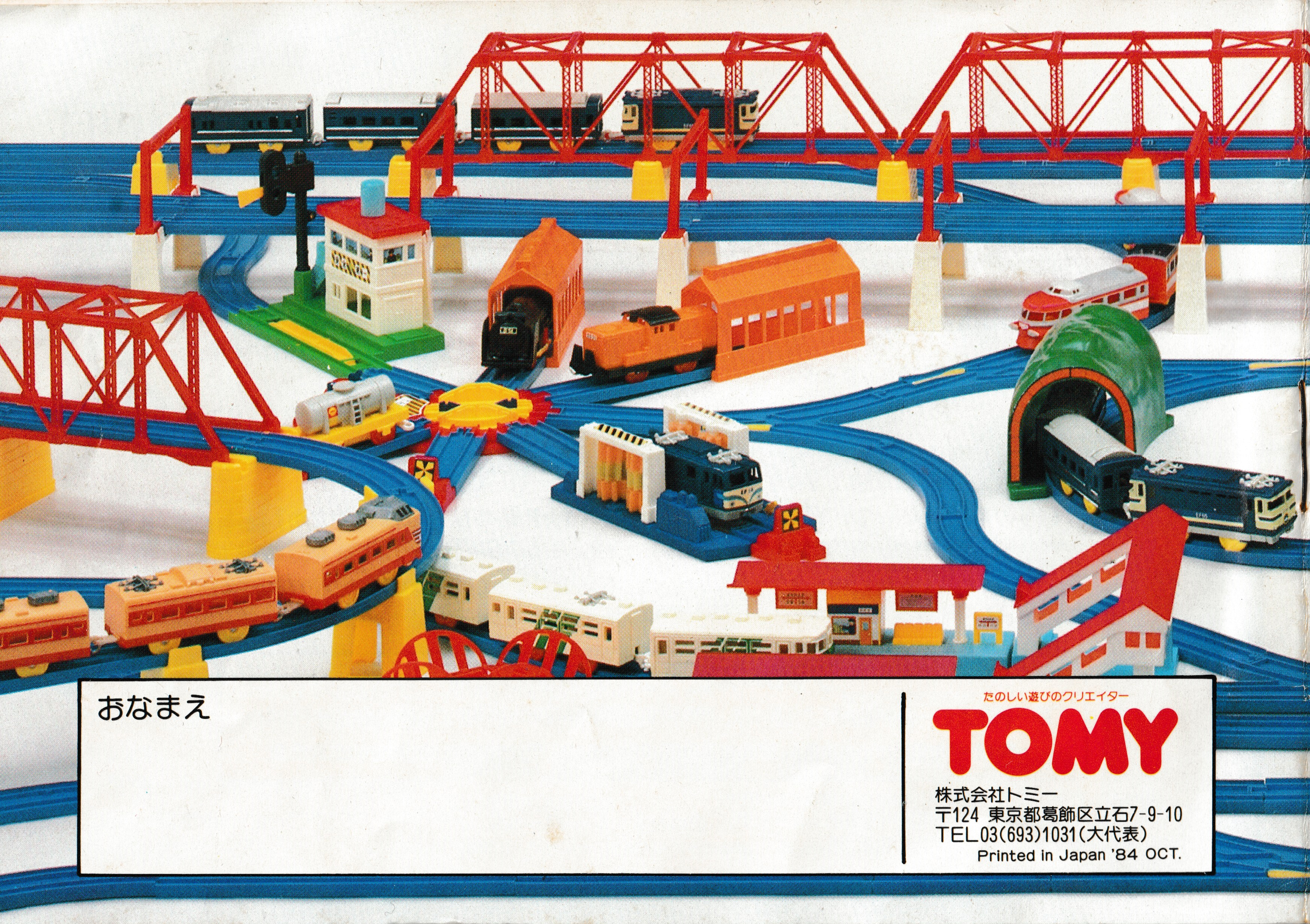
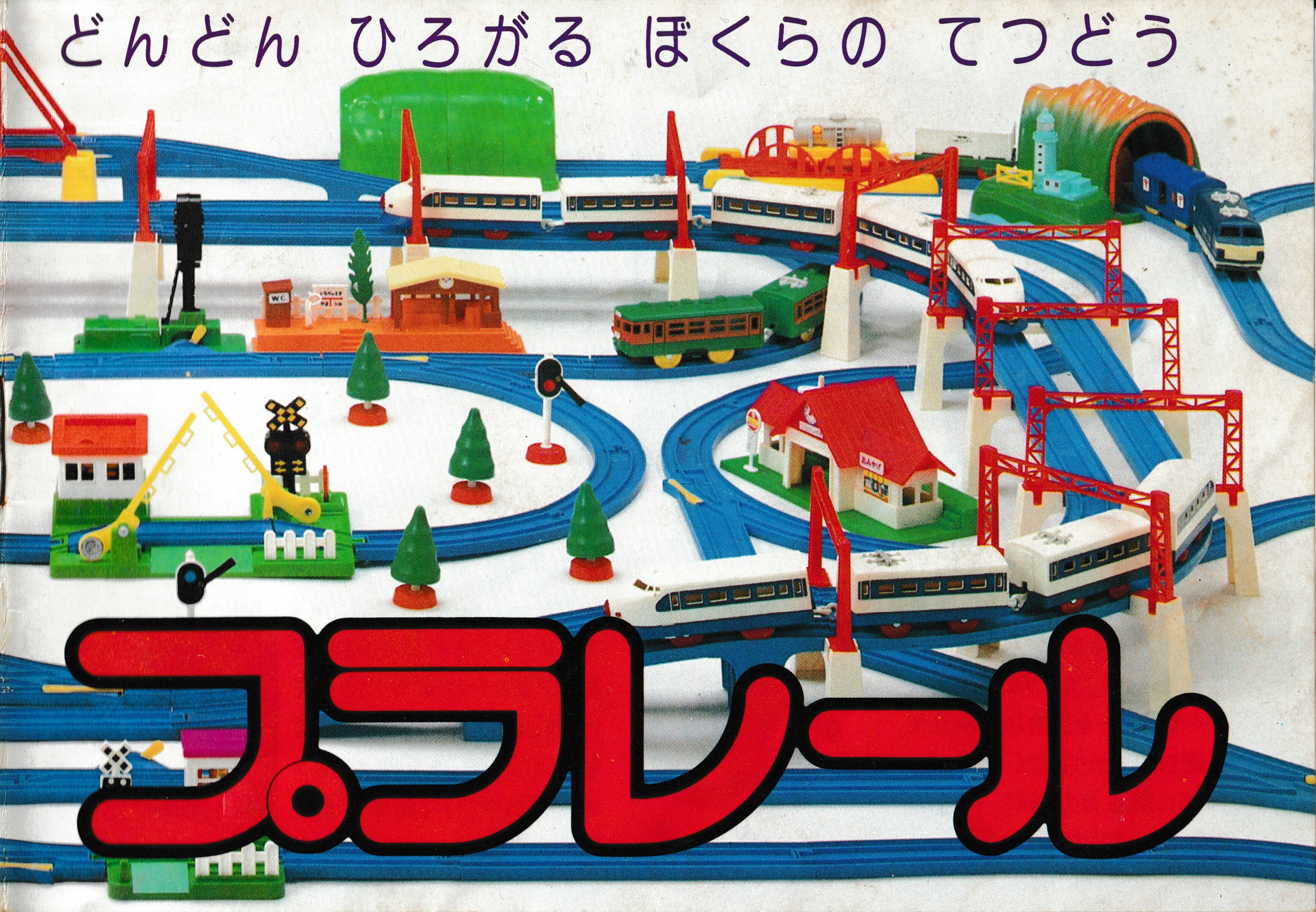
Most of the 1980s Tomy Plarail catalogues shared some of the same contents, although there was a new cover and other updates changed in 1984. This catalogue was printed in October 1984 - there are no less than three different variations of the Plarail catalogue printed in 1984.
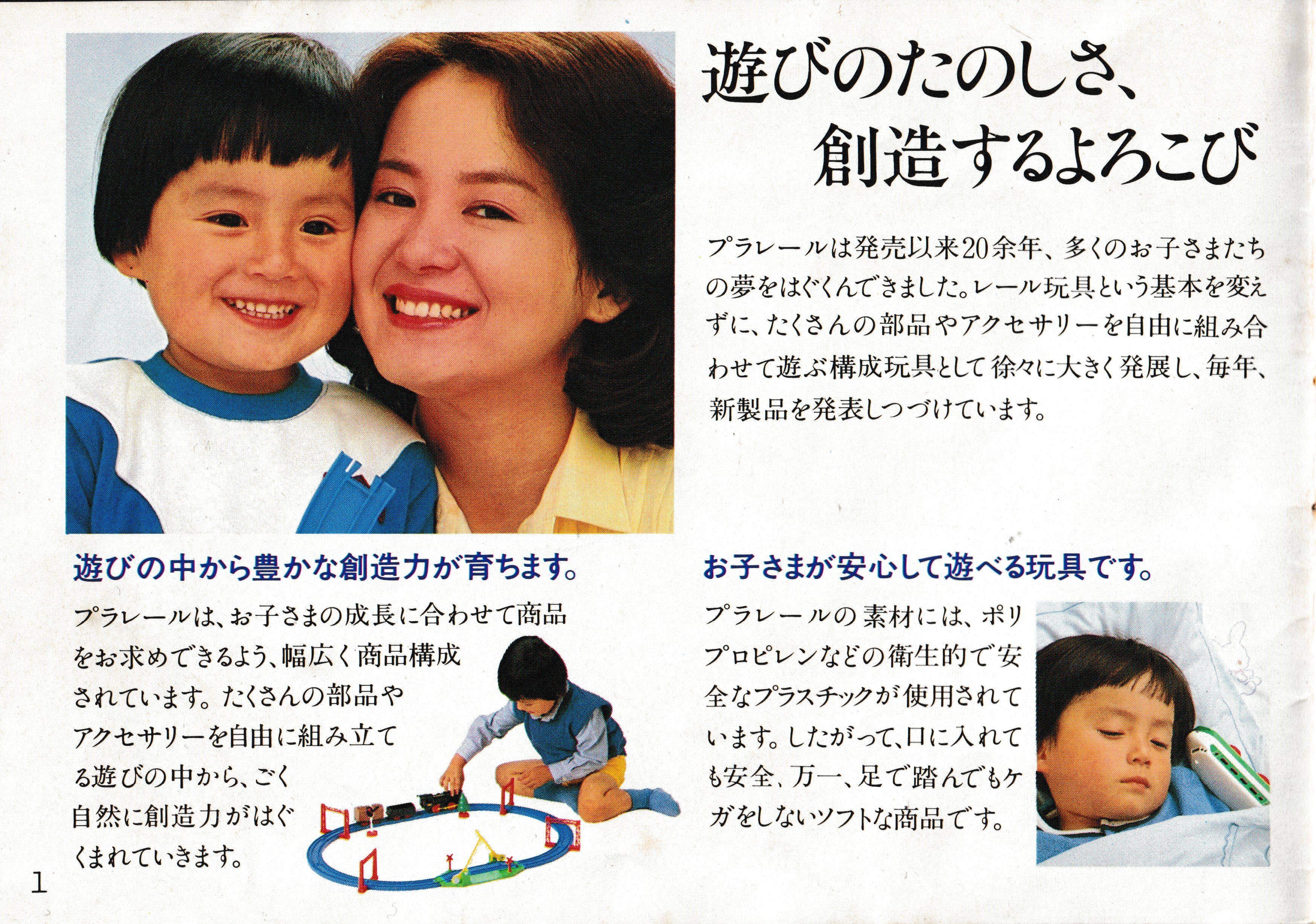
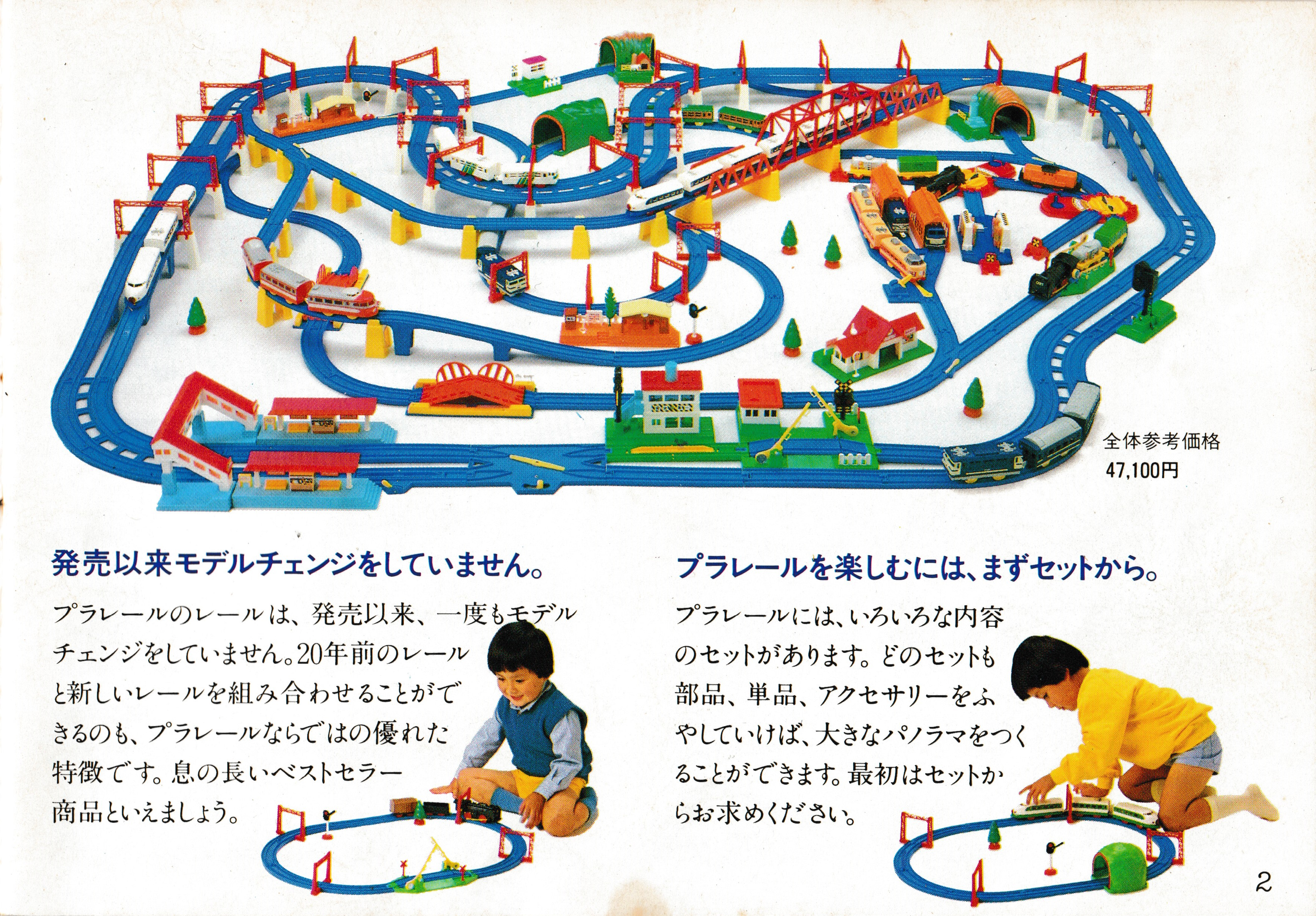
The opening spread is copied almost completely from the 1981-1983 catalogues, which all shared the previous cover design. The layout in the upper right hand corner is different and also now includes the total price (47,100 yen is over 60,000 yen today!). The first page talks a little bit about how Plarail is made from safe materials and inspires children's creativity. The opposite page talks about how the Plarail rail standard has not changed in the 20 years since Plarail began and that the easiest way to start is with any set. Plarail was actually 25 years old in 1984 (if not 26)
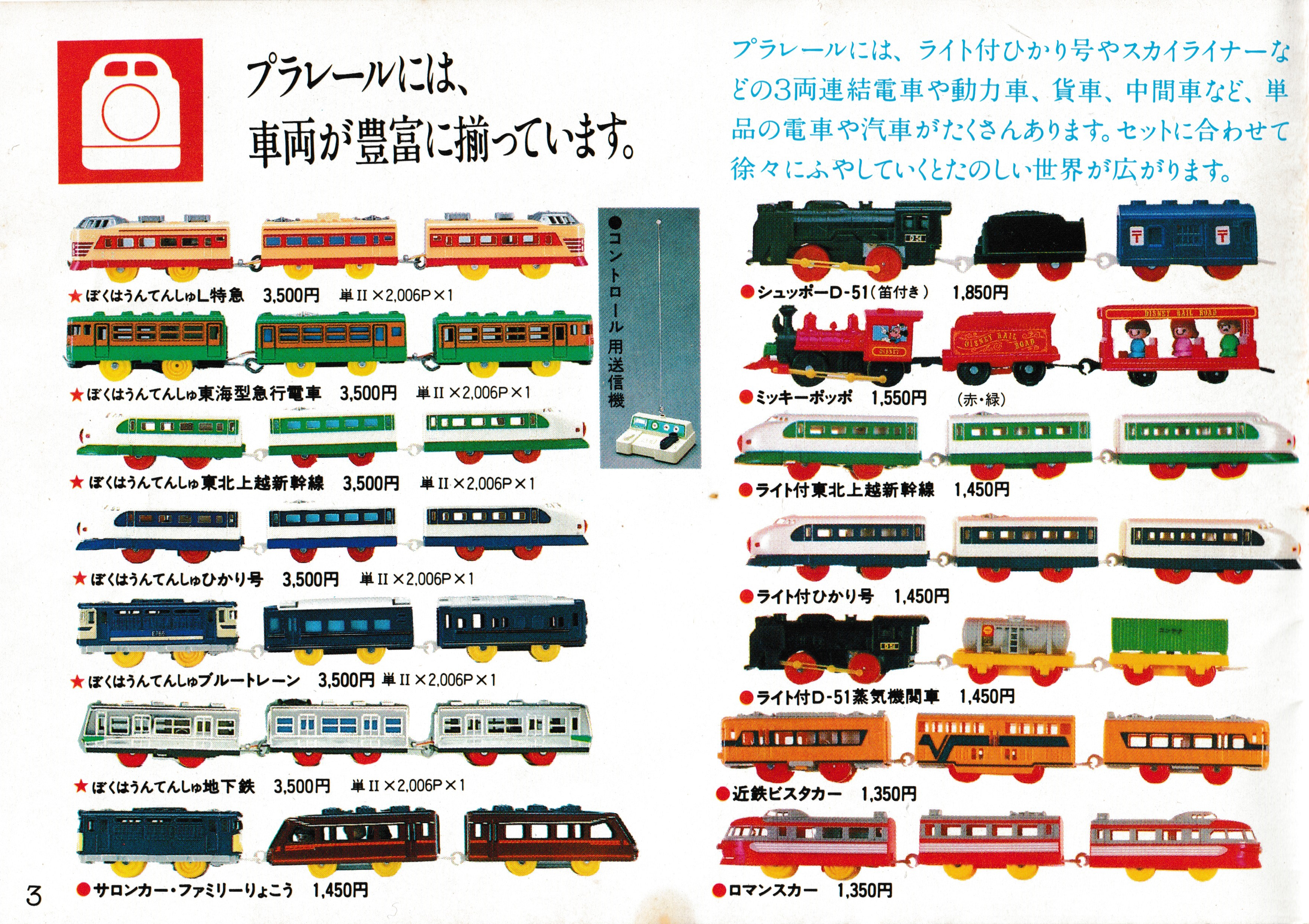
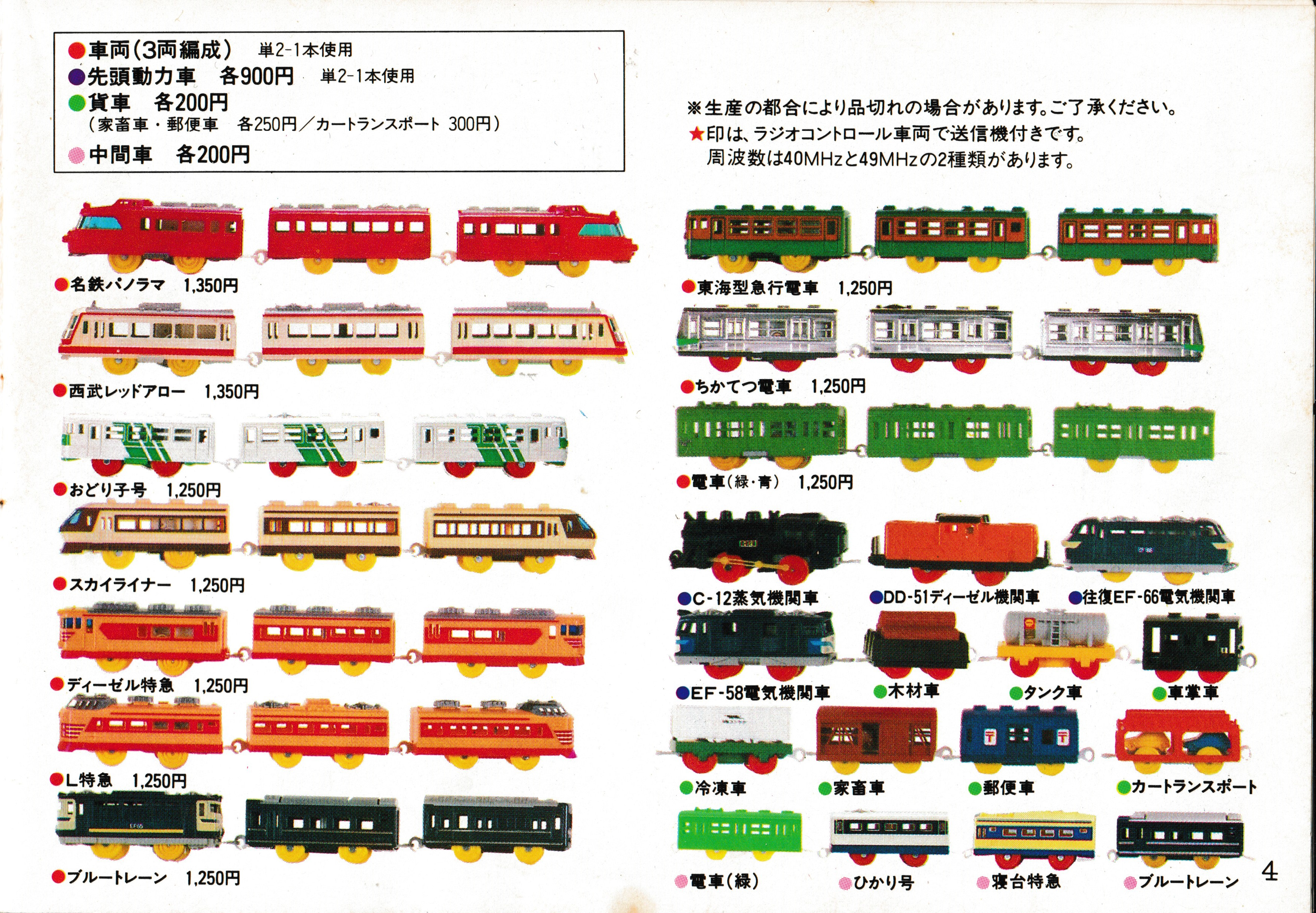
The lineup of individual release trains is entirely cool old power trains, with recent additions including the Family Travel Salon Car as well as all of the new-for-1984 radio control trains on the left page (previous 1984 catalogues showed more new trains as they released, with all of them being out by this point). Interestingly, the correct couplings have been depicted on the L Limited, Tokai, and Subway trains while the Blue Train and both Shinkansens have traditional couplings, even though they all have the blue radio control receiver depicted inside the intermediate cars. The remote on this page looks oddly white but I believe that is just a quirk of the printing or source photograph, there is a larger shot later in the catalogue that looks closer to the real color.
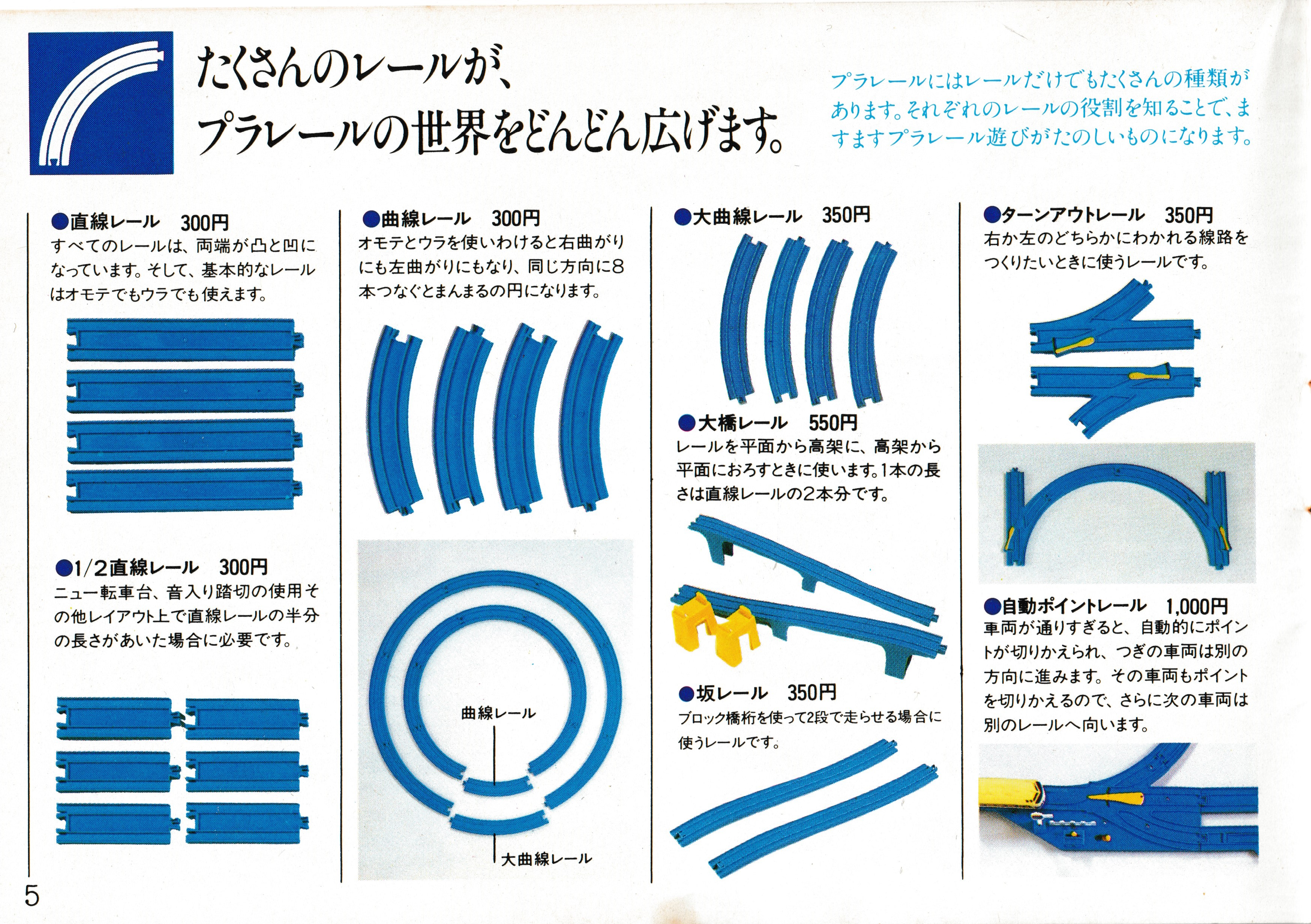
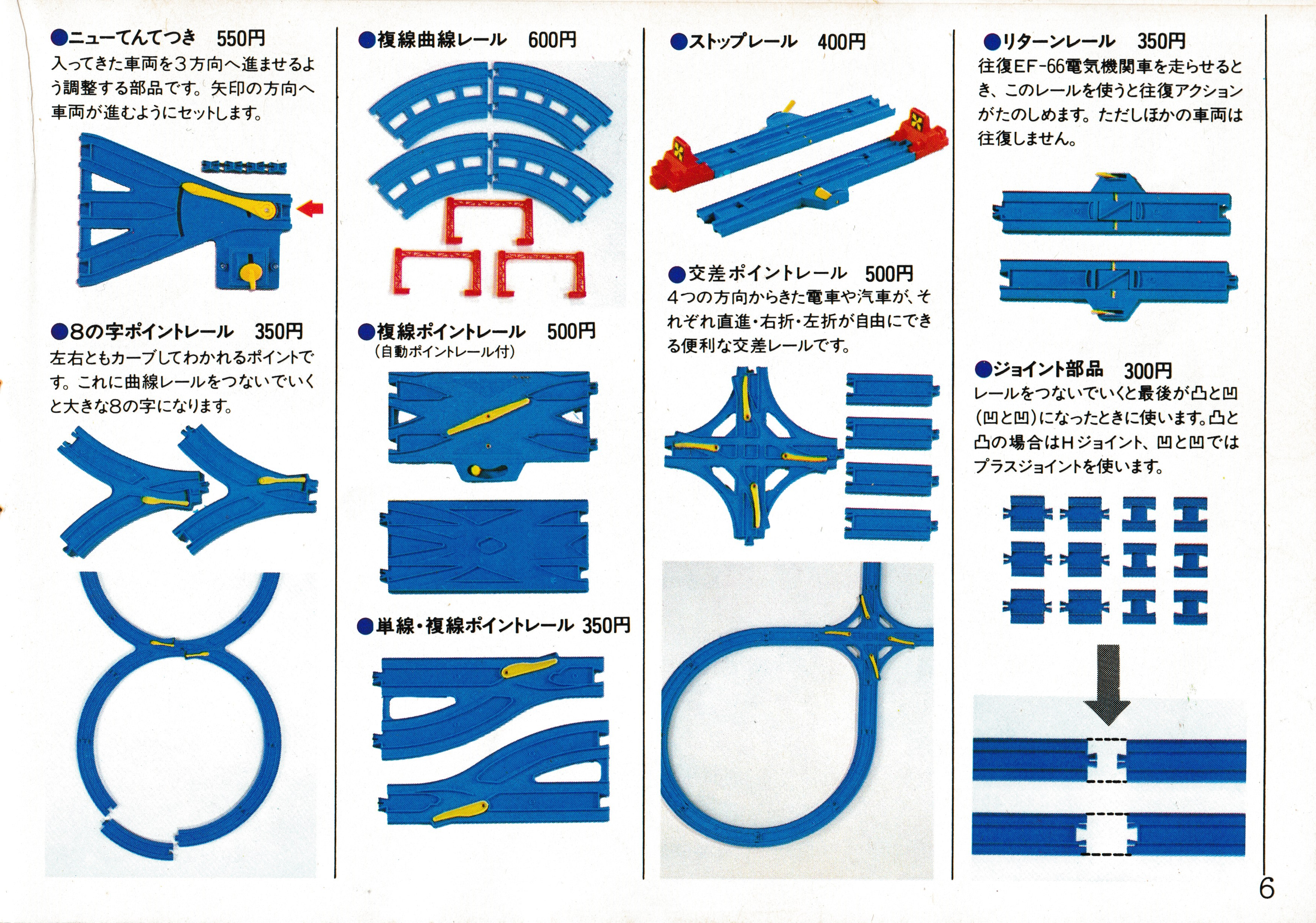
As touted earlier in the pamphlet, many rails have not changed since their introduction in the 1960s, with large radius curves, the double track system, and older sloped bridge rails and joint rails on sale. The only new addition since the 1983 catalogue is the individual release of the modern unsupported slope rail which had already been used in some sets.
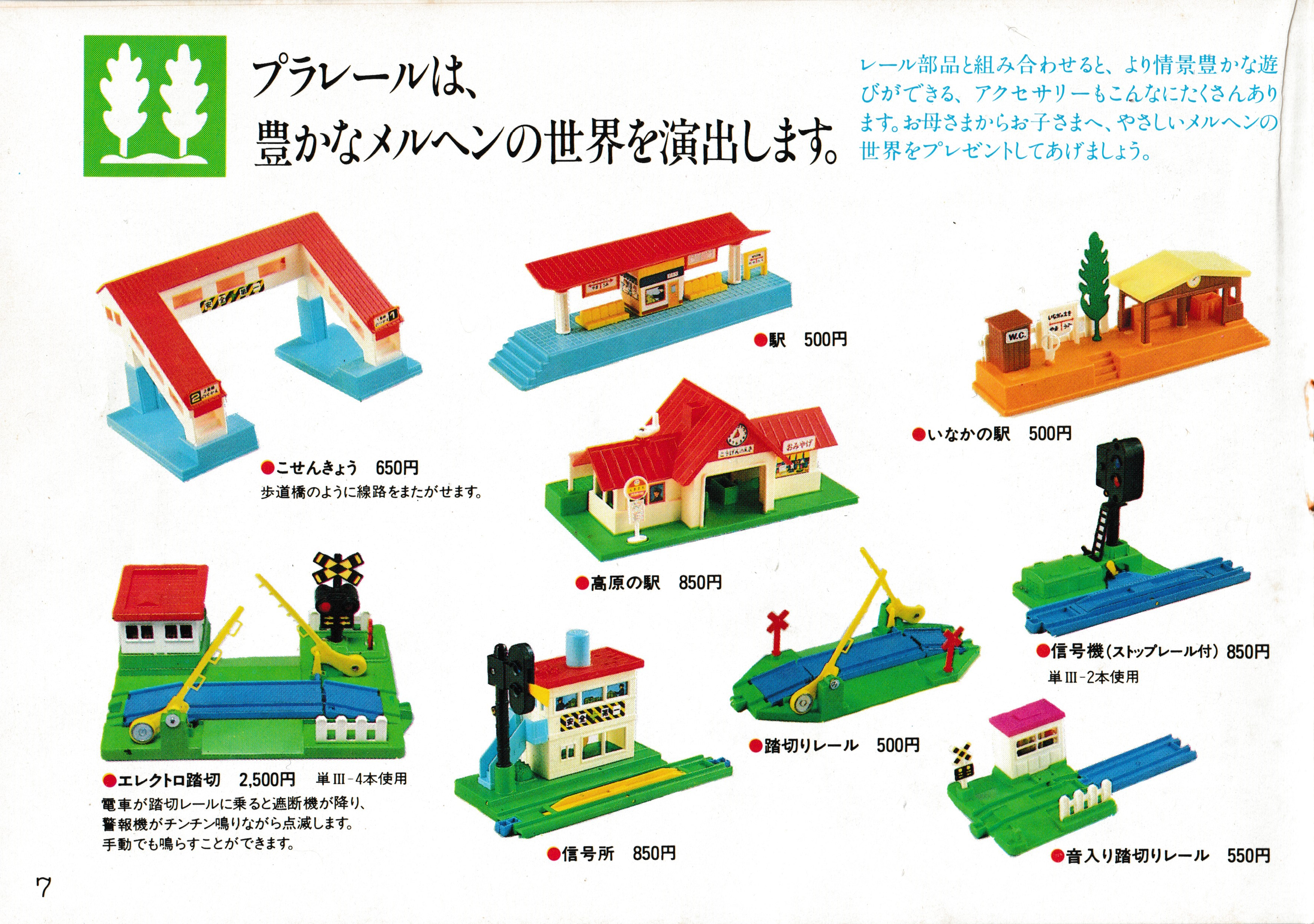
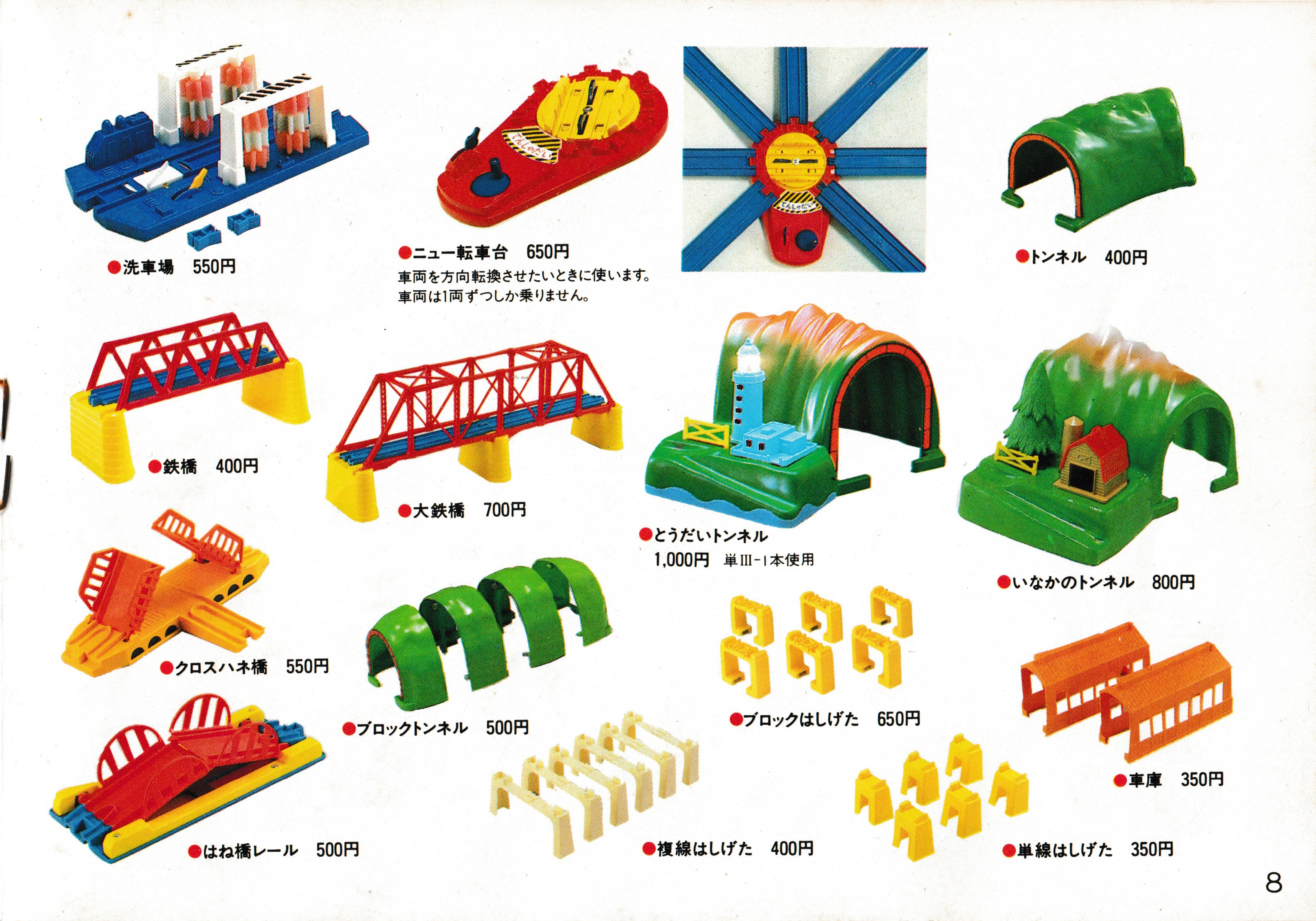
The stacking bridge girder system to accompany the new unsupported slope rail were new additions to the range and would eventually lead to Plarail's vertical push in the later 1980s. Many classic and sought-after accessories were still in their prime in this era.
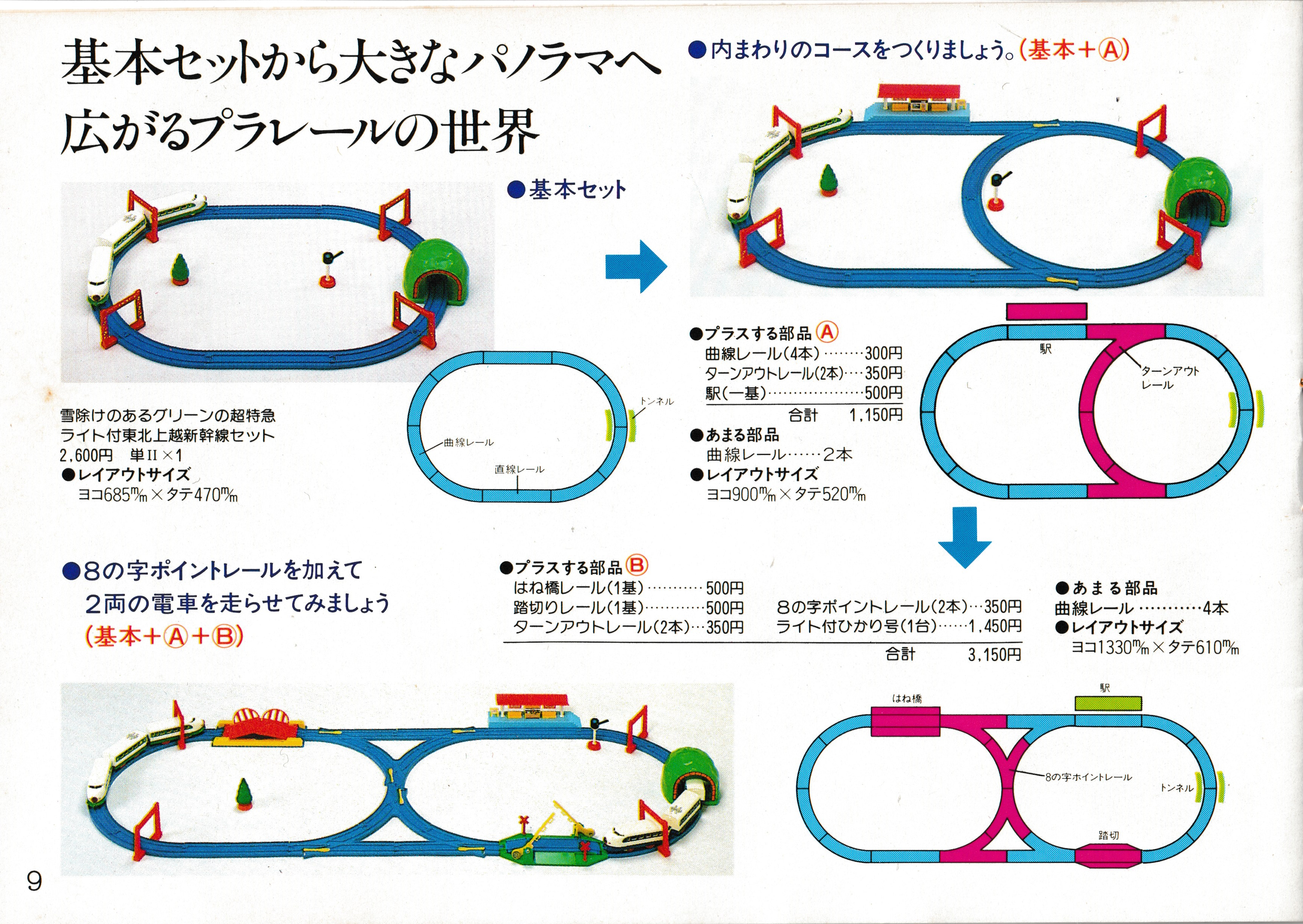
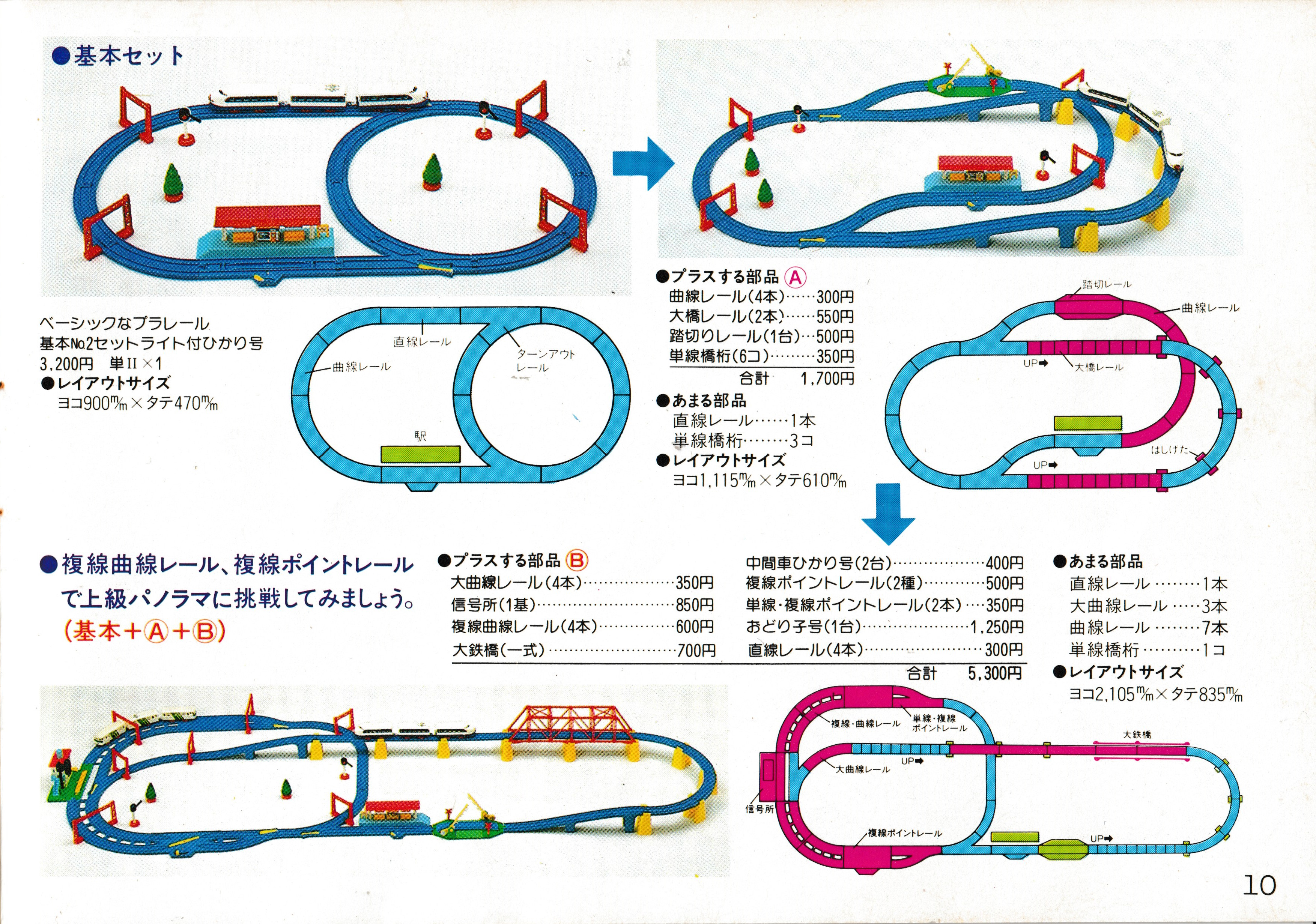
The layout pages in the back of the catalogue were changed in 1984 to focus on expanding some of the sets or basic set layouts into something more interesting. Following their ideas, you could take a Basic No.1 Set-style set like the pictured Tohoku Joetsu Shinkansen Set and expand it into the Basic No.2 layout, then the overpass layout, and finally to the cool elevated layout with a section of double track. Both larger layouts shown are similar to layouts shown in the 1982 catalogue.
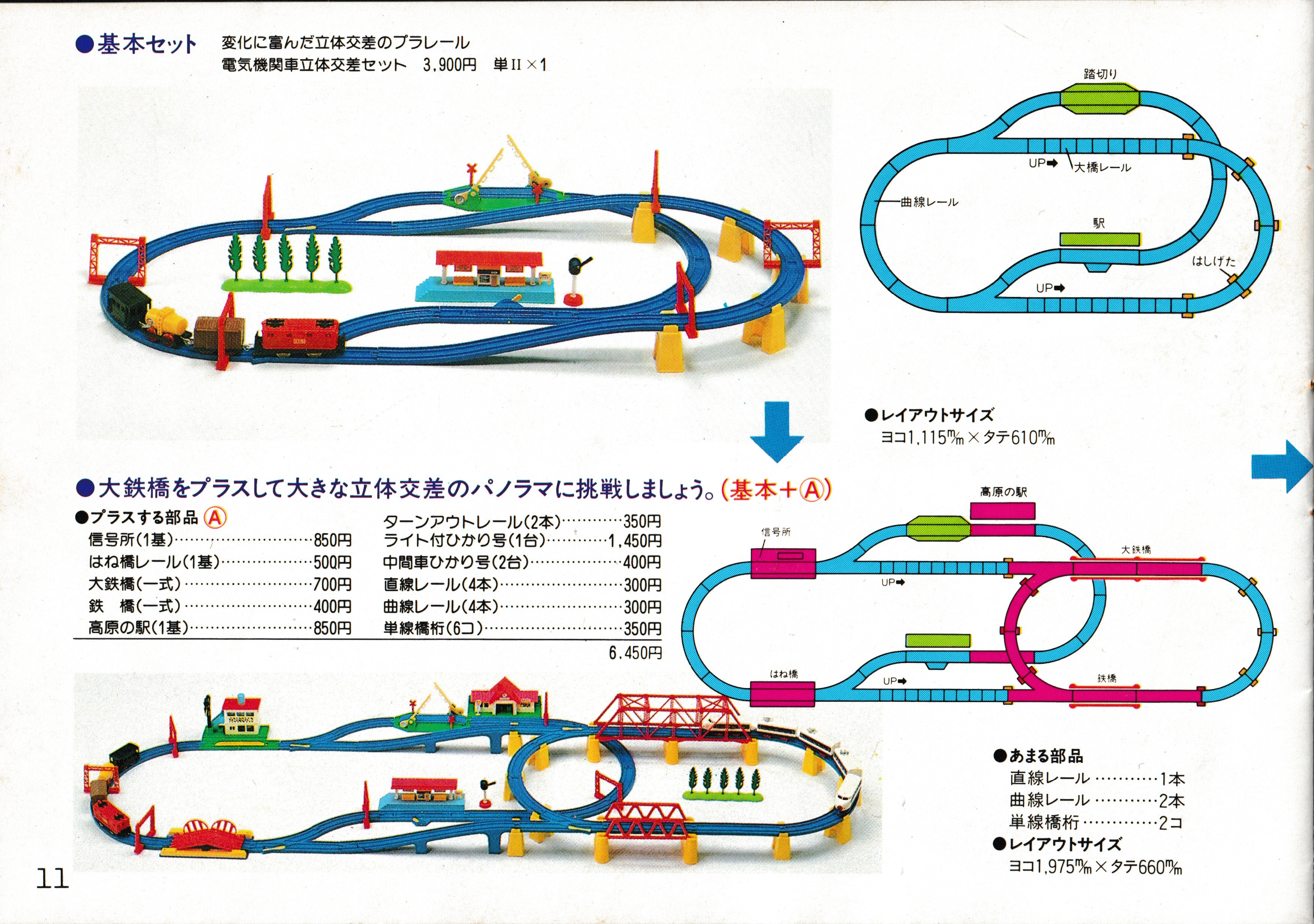
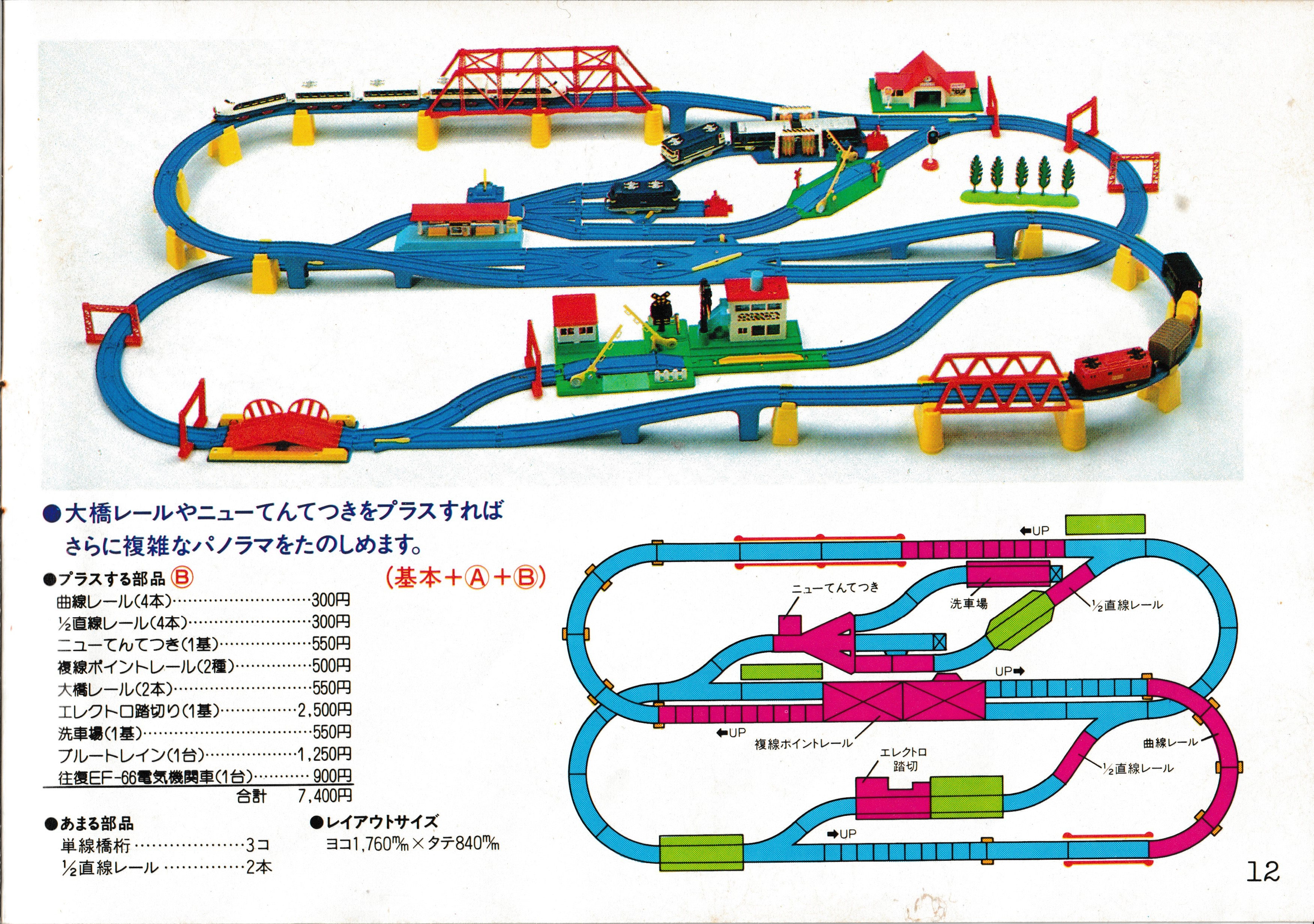
This page shows ideas for expanding the Electric Locomotive Overpass Set that this copy came with. The layout to the right that it can be expanded into is very similar to one shown in the earlier 1980s catalogues. As noted on that page, you can see where some pieces like the electro railway crossing and signal box are sitting at a weird angle off-axis.
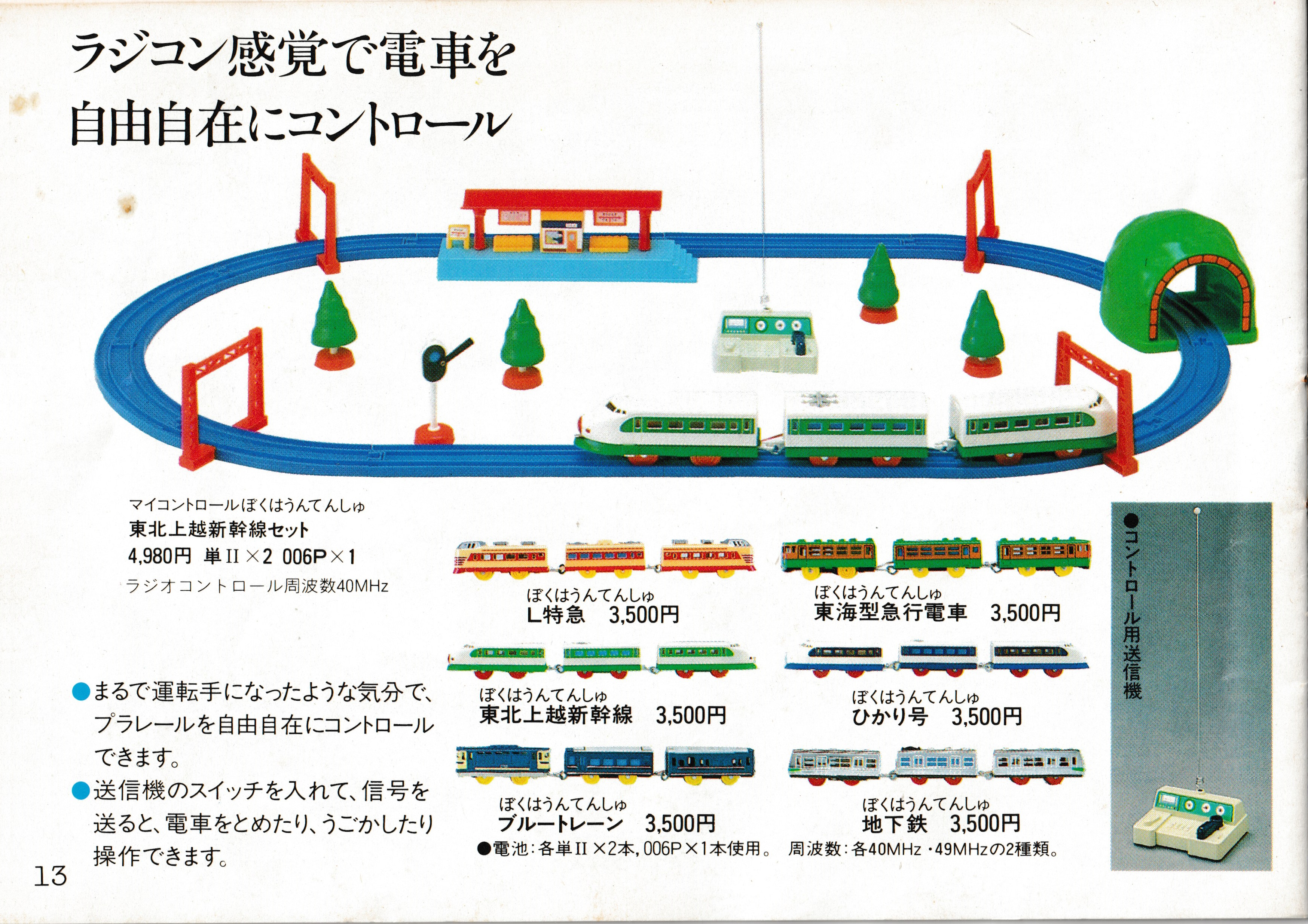
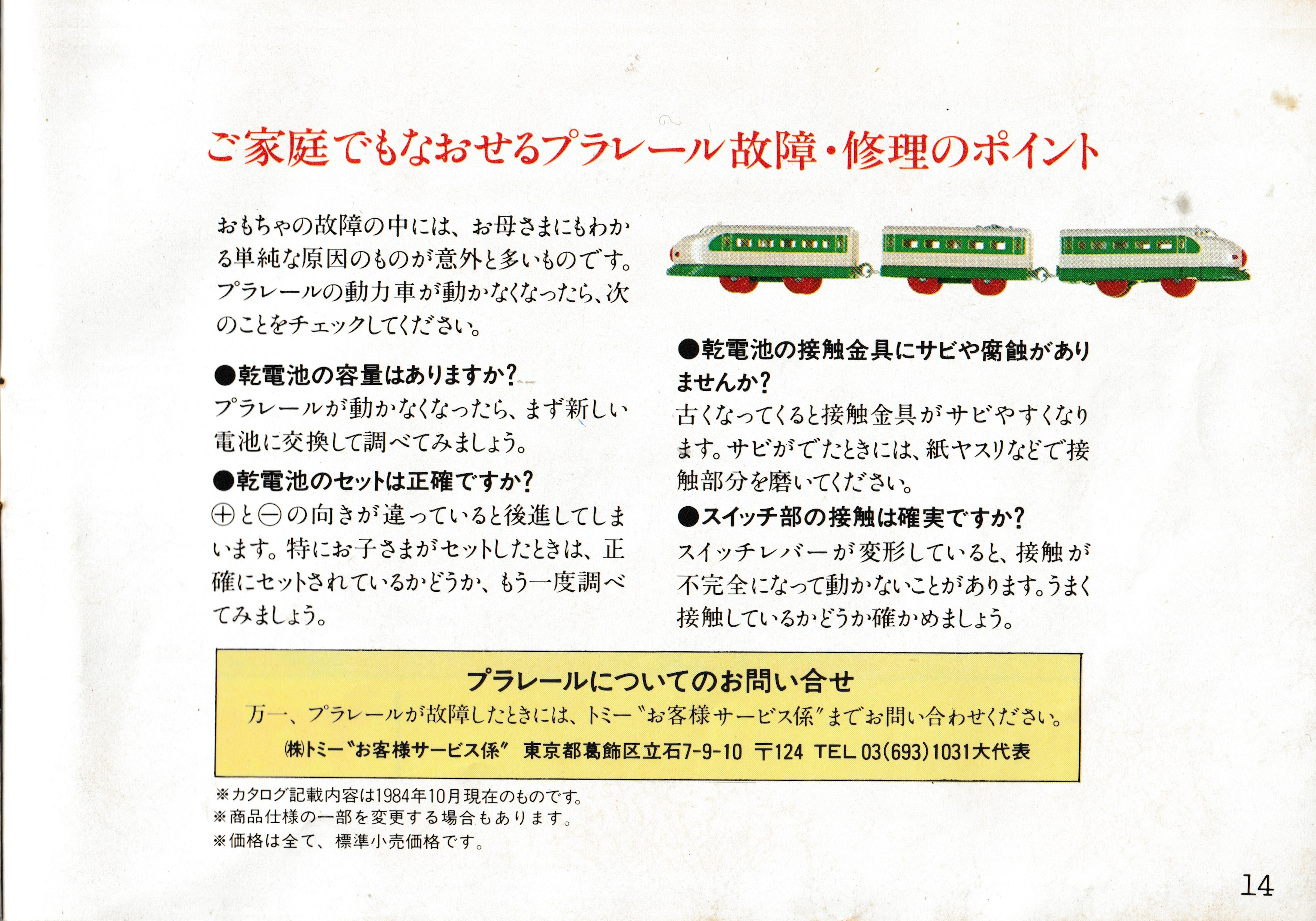
The second to last page advertises the first radio control engines again, with all of them having the correct metal couplings. Also shown is the Radio Control Tohoku Joetsu Shinkansen Set and a larger photo of the remote.